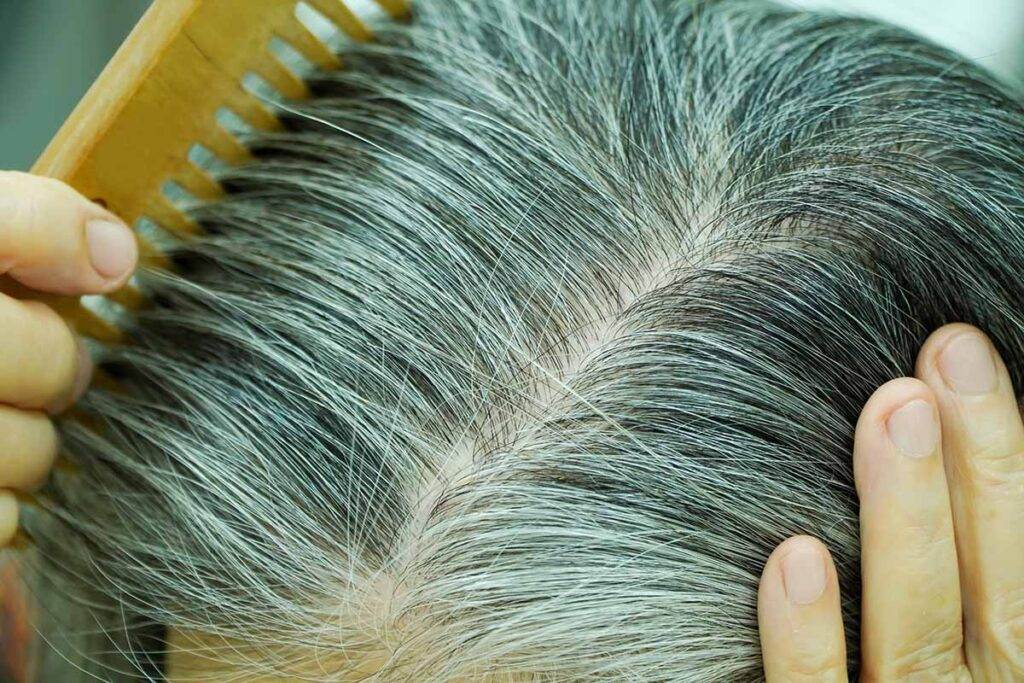Approximately 40% of women experience visible hair loss by age 40, but for many women do not experience hair loss until after menopause has ended or it's in a later stage. And even then, it can be difficult to spot menopausal hair loss and start treatment therapy before it's too late.
Fortunately, there are distinctive signs that you should be looking for and there are treatment methods that may yield even better results if you catch the symptoms early on. Here's how to identify and treat hair loss after menopause.
Why does Menopausal Hair Loss Happen?
This is an issue that countless women struggle with. It mostly has to do with a reduction in estrogen and progesterone production in your system, which then leaves the androgens unopposed. Androgens can decrease the functionality of your follicles and lead to early hair loss or thinning. This condition is commonly referred to as female pattern hair loss.
https://www.meditresse.com/blog/new-study-confirms-over-50-of-women-experience-female-pattern-hair-loss-after-menopause/
How Can I Spot Menopausal Hair Loss?
The key here is to spot the symptoms before your follicles cease functioning altogether. The earlier you spot the telltale signs, the better off you'll be receiving hair rejuvenation treatments. Here are a few signs to keep a sharp eye out for:
- Widening of your part: While men typically see losses right at the forehead, women more typically see them in their part. If you notice any widening, that's a sign that loss is happening.
- Excessive Shedding: While it is normal to shed between 50-100 hairs a day, if you are noticing an increase in shedding, it is possible that you experience female pattern hair loss or telogen effluvium.
- Bald Patches: Small patches of baldness is a sign that more may appear shortly. This type of loss is most likely alopecia areata.
https://www.meditresse.com/blog/hair-thinning-hair-loss-and-shedding-is-there-a-difference/
Are There any Treatments for Menopausal Hair Loss?
At Medi Tresse, we understand the impact of menopausal hair loss and want to ensure individuals that we are focused on finding a solution that works best for you and your lifestyle. Fortunately, there are a variety of treatments available to you if you're experiencing menopause-related female pattern hair loss.
Here are some of the most effective options:
- Platelet Rich Plasma (PRP) Therapy: PRP stimulates follicle activity by injecting platelets, stem cells and growth factors taken from your own blood into affected areas of your scalp. Currently, PRP Therapy is available at all of our locations.
- Optimal Platelet Concentration (OPC) Therapy: At Medi Tresse, we have the ability to better deliver the optimal concentration of the PRP solution and advanced technology to deliver them in a completely painless fashion without needles. Currently, OPC Therapy is available at all of our locations. Find out more about OPC Therapy in this case study.
- Low-Level Laser Therapy (LLLT): Low level laser therapy has been shown to prolong the growth phase of the hair and increase blood flow to the hair follicles.
- No Shave FUE Hair Transplants for Women: The No Shave FUE Hair Transplants are an advanced version of the traditional follicular unit extraction (FUE) method and does not require shaving of the donor area. Read more about the No Shave FUE in this blog post.
Whether pre- or post-menopause, female pattern hair loss can seriously affect your confidence and self-image. Spotting these symptoms early on could be the key to a highly effective treatment.
To learn more about possible treatments from a hair loss specialist, book your consultation with Medi Tresse today.
